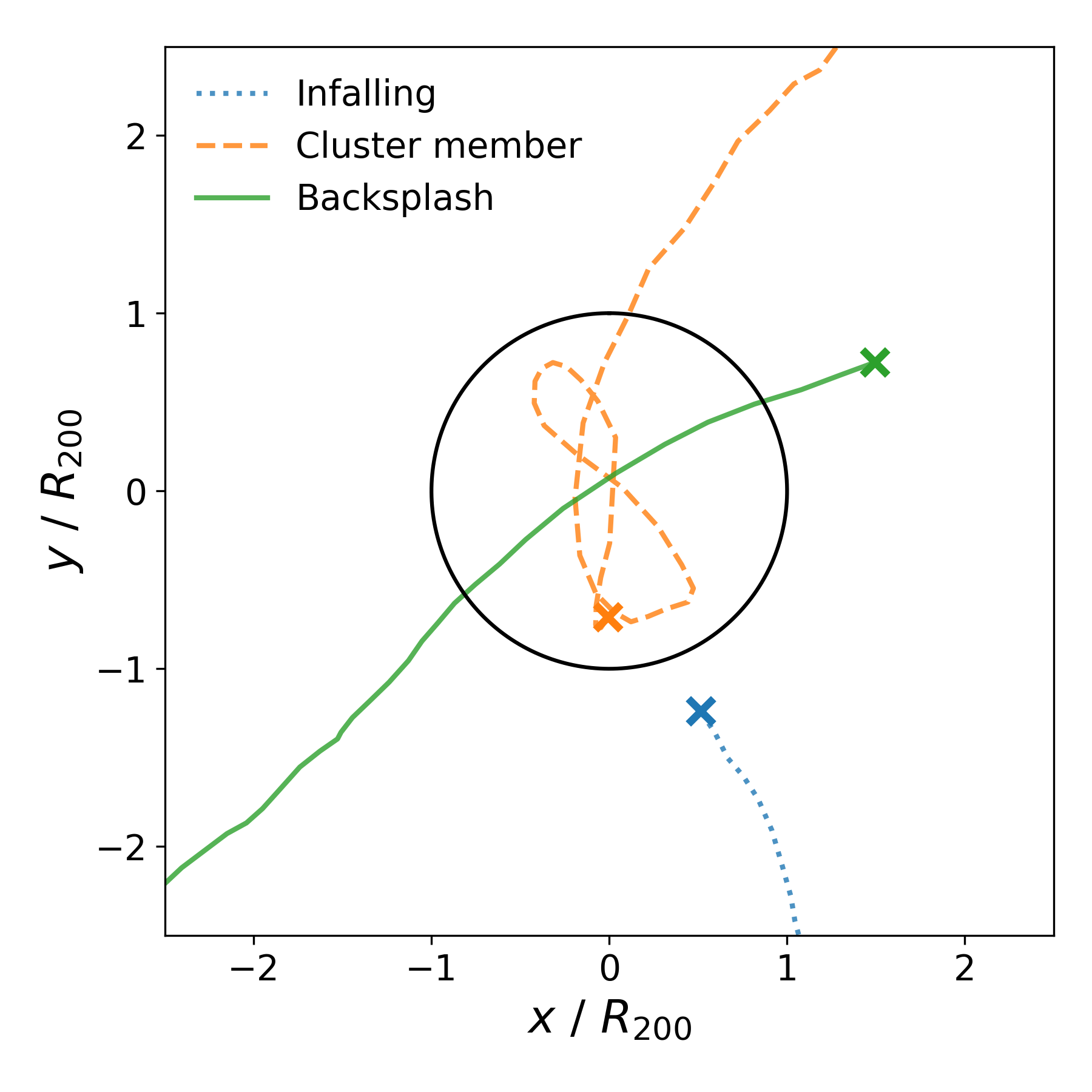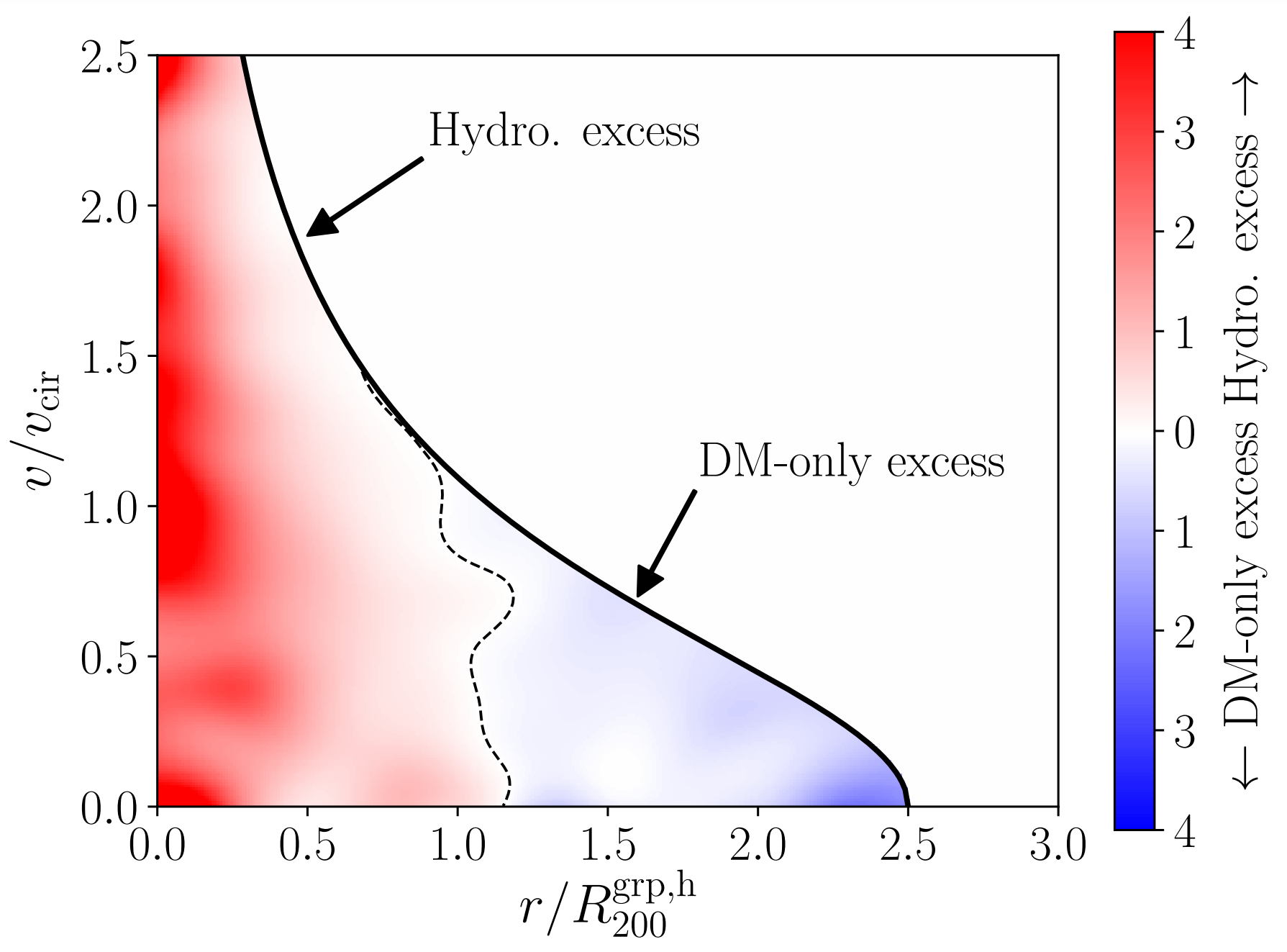My research involves using cosmological simulations to probe the evolution of galaxies, groups and clusters. Some areas I am particularly focused on include:
- Infalling galaxies and galaxy groups
- The effects of environment on galaxy properties
- Cluster dynamics and dynamical states
- Large-scale structure and cosmic filaments
- Connections between simulations and observations
In particular, I spend a lot of my time thinking about the dynamics of galaxy clusters and large-scale structures; I am heavily involved in The Three Hundred collaboration, and lead the collaboration's Cluster Dynamics science working group.
I'm also interested in pretty much anything related to the evolution of galaxies! I recently played a leading role on the organising committee for the Galaxy Evolution and Environment in Southern and Eastern Ontario (GEESE-ON) conference, hosted at the University of Waterloo.

UMAP embedding of galaxy clusters, showing how only some (not all) recently-forming clusters have low-concentration dark matter haloes.
Dynamical state
Galaxy clusters can be described in terms of their 'dynamical state', and are often split into early-forming 'relaxed' clusters, and recently-forming 'disturbed' clusters.
We show in Haggar et al. (2024) that dynamical states are actually far more complicated. Using PCA and UMAP, we show that dynamical state varies along multiple axes, meaning it is important to specify the sense in which a cluster is 'dynamically relaxed'.
Backsplash galaxies
'Backsplash galaxies' are a class of cluster galaxies that have previously passed through a cluster, but are now located beyond the radius of the cluster. They act as a contaminant when studying the effect of environment on galaxy evolution
In Haggar et al. (2020), we show that the fraction of backsplash galaxies around a cluster varies between approximately 20% and 80%. The fraction varies with the dynamical state of a cluster, which can be measured observationally, allowing us to predict the prevalence of backsplash galaxies.

Paths of an infalling galaxy, cluster member and backsplash galaxy, taken from our simulations. Black circle shows the radius of the cluster, and crosses show galaxy positions at z = 0.

Fractional difference in the distribution of galaxies in the phase space of groups, showing regions with an excess of galaxies in hydrodynamical (red) and dark matter-only (blue) simulations.
Infalling groups
Clusters can grow by accreting groups of galaxies, typically containing tens of members, but in Haggar et al. (2023) we use hydrodynamical simulations to show that groups are very quickly tidally disrupted when entering a cluster. This means that any groups observed nearby to a cluster are almost certainly on their first approach. We also show that galaxies in different parts of these groups undergo different processes, such as tidal stripping and mergers.
In Haggar et al. (2021) we also show that hydrodynamical simulations are crucial in studying galaxy groups, and that dark matter-only simulations typically do not model the central regions of galaxy groups and clusters well, leading to an apparent deficit in the number of galaxies.